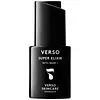What's inside
What's inside
 Key Ingredients
Key Ingredients

 Benefits
Benefits

 Concerns
Concerns

 Ingredients Side-by-side
Ingredients Side-by-side

Water
Skin ConditioningCaprylic/Capric Triglyceride
MaskingNiacinamide
SmoothingShea Butter Ethyl Esters
EmollientGlycerin
HumectantSqualane
EmollientJojoba Esters
EmollientCetearyl Alcohol
EmollientSodium Acrylates Copolymer
Tocopheryl Acetate
AntioxidantRetinyl Retinoate
Skin ConditioningTetrahydrodiferuloylmethane
AntioxidantCurcuma Longa Root Extract
MaskingAllantoin
Skin ConditioningSodium Hyaluronate
HumectantTocopherol
AntioxidantHelianthus Annuus Seed Oil
EmollientHelianthus Annuus Seed Wax
Skin ConditioningUbiquinone
AntioxidantHydrogenated Coco-Glycerides
EmollientSynthetic Fluorphlogopite
Phenoxyethanol
PreservativeGlyceryl Stearate
EmollientCanola Oil
EmollientLecithin
EmollientSodium Stearoyl Glutamate
CleansingEthylhexylglycerin
Skin ConditioningLauroyl Lysine
Skin ConditioningTetrahydropiperine
Skin ConditioningPolyglycerin-3
HumectantLactic Acid
BufferingParfum
MaskingWater, Caprylic/Capric Triglyceride, Niacinamide, Shea Butter Ethyl Esters, Glycerin, Squalane, Jojoba Esters, Cetearyl Alcohol, Sodium Acrylates Copolymer, Tocopheryl Acetate, Retinyl Retinoate, Tetrahydrodiferuloylmethane, Curcuma Longa Root Extract, Allantoin, Sodium Hyaluronate, Tocopherol, Helianthus Annuus Seed Oil, Helianthus Annuus Seed Wax, Ubiquinone, Hydrogenated Coco-Glycerides, Synthetic Fluorphlogopite, Phenoxyethanol, Glyceryl Stearate, Canola Oil, Lecithin, Sodium Stearoyl Glutamate, Ethylhexylglycerin, Lauroyl Lysine, Tetrahydropiperine, Polyglycerin-3, Lactic Acid, Parfum
Caprylic/Capric Triglyceride
MaskingSqualane
EmollientShea Butter Ethyl Esters
EmollientHelianthus Annuus Seed Oil Unsaponifiables
EmollientOryza Sativa Bran Oil
EmollientTocopheryl Acetate
AntioxidantHexylresorcinol
AntimicrobialEthyl Lactyl Retinoate
AbrasiveGlycyrrhiza Glabra Root Extract
BleachingGlycine Soja Oil
EmollientTocopherol
AntioxidantBeta-Sitosterol
Emulsion StabilisingSqualene
EmollientHydroxypropyl Methylcellulose
Emulsion StabilisingPolysorbate 20
EmulsifyingSodium Ascorbate
AntioxidantCaprylic/Capric Triglyceride, Squalane, Shea Butter Ethyl Esters, Helianthus Annuus Seed Oil Unsaponifiables, Oryza Sativa Bran Oil, Tocopheryl Acetate, Hexylresorcinol, Ethyl Lactyl Retinoate, Glycyrrhiza Glabra Root Extract, Glycine Soja Oil, Tocopherol, Beta-Sitosterol, Squalene, Hydroxypropyl Methylcellulose, Polysorbate 20, Sodium Ascorbate
 Reviews
Reviews

Ingredients Explained
These ingredients are found in both products.
Ingredients higher up in an ingredient list are typically present in a larger amount.
This ingredient is an emollient, solvent, and texture enhancer. It is considered a skin-softener by helping the skin prevent moisture loss.
It helps thicken a product's formula and makes it easier to spread by dissolving clumping compounds.
Caprylic Triglyceride is made by combining glycerin with coconut oil, forming a clear liquid.
While there is an assumption Caprylic Triglyceride can clog pores due to it being derived from coconut oil, there is no research supporting this.
Learn more about Caprylic/Capric TriglycerideShea Butter Ethyl Esters is created from, as you might have guessed, shea butter.
According to the manufacturer, this ingredient is lighter, longer lasting, and combines well with other ingredients.
Due to the shea butter base, this ingredient may not be fungal-acne safe.
Learn more about Shea Butter Ethyl EstersSqualane is an emollient that helps the skin hold onto moisture. It's an oily liquid that occurs naturally in certain types of fish and plant oils.
Because squalane boosts hydration in the skin, it also comes with plenty of benefits: it is an antioxidant and can help fight free radicals and skin damage. Squalane is also found to have a detoxifying effect when applied.
Squalane comes from squalene, which occurs naturally within the sebum of our skin. It is one of the oils our skin produces to keep itself hydrated. Squalane is the hydrogenated version of squalene and has a longer shelf life.
Research shows that squalane is non-irritating (even at 100% concentration).
In general, it's a fantastic ingredient. It does a great job at hydrating the skin, and it's suitable for those with sensitive skin.
The source of squalane may impact malassezia / fungal acne. This is because olive oil derived squalane can contain impurities such as fatty acids and plant waxes. Sugarcane derived squalane is recommended for anyone with malassezia concerns.
Is squalane vegan?
This depends on the source. Squalane can be derived from both plants and animals. Most squalane used in skincare comes from plants.
Please note: the source of squalane is only known if disclosed by the brand. We recommend reaching out to the brand if you have any questions about their squalane.
Read more about squalene with an "e".
Is squalane an oil?
Squalane is often called an oil, but it’s technically not; it’s a hydrocarbon, meaning it’s only made of carbon and hydrogen, unlike true oils which are triglycerides made of fatty acids and glycerol.
The term “oil-free” isn’t regulated, so companies can define it however they want. Some exclude all oils, while others just avoid mineral oil or comedogenic oils.
While some people avoid oils thinking they cause breakouts, the right kind of oil (or oil-like ingredient like squalane) can actually help balance and hydrate your skin. It’s worth testing out simple oils or squalane to see what works best for your skin.
Learn more about SqualaneTocopherol (also known as Vitamin E) is a common antioxidant used to help protect the skin from free-radicals and strengthen the skin barrier. It's also fat soluble - this means our skin is great at absorbing it.
Vitamin E also helps keep your natural skin lipids healthy. Your lipid skin barrier naturally consists of lipids, ceramides, and fatty acids. Vitamin E offers extra protection for your skin’s lipid barrier, keeping your skin healthy and nourished.
Another benefit is a bit of UV protection. Vitamin E helps reduce the damage caused by UVB rays. (It should not replace your sunscreen). Combining it with Vitamin C can decrease sunburned cells and hyperpigmentation after UV exposure.
You might have noticed Vitamin E + C often paired together. This is because it is great at stabilizing Vitamin C. Using the two together helps increase the effectiveness of both ingredients.
There are often claims that Vitamin E can reduce/prevent scarring, but these claims haven't been confirmed by scientific research.
Learn more about TocopherolTocopheryl Acetate is AKA Vitamin E. It is an antioxidant and protects your skin from free radicals. Free radicals damage the skin by breaking down collagen.
One study found using Tocopheryl Acetate with Vitamin C decreased the number of sunburned cells.
Tocopheryl Acetate is commonly found in both skincare and dietary supplements.
Learn more about Tocopheryl Acetate